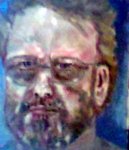Before long I will be teaching again my urban economics course. I started to re-read my lecture notes and the new papers that were published in the last 12 months.
I am deeply disappointed with the way my fellow professional urbanists view cities and the prescriptions that they conjure up to cure urban ills that may or may not exist. My disappointment stems from the clear dissonance between what continues to be published in the professional literature and evidence. Thus for example, cities are said to expand outwards like sea waves in all directions. They are not supposed to leave any un-built areas in their wake. Open spaces within and around urban areas are thought to be a relic of early urban evolution. The truth is quite different.
Like the proverbial seven blind men, we see cities partly and imprecisely. I would like to persuade my students to see cities from a non-traditional perspective. It is my intention to provide them with a distant, and yet close, perspective and to change the way they think about their home.
There are two fundamental problems with the way that professionals have been looking at cities. Their vision is obscured by the use of statistical data. The information they use is granular and their chunky data display only that which statistical units reveal. Census bureaus and other government producers of statistics view cities through a prism that "divided" cities into statistical areas and gather data accordingly. Statistical areas are relatively large. Within such relatively large area there are many buildings, activities and people. They display a great diversity of things. In official statistics, each statistical area provides a distorted, average, image of the activities within it and the city as a whole is seen as an average of these averages. The vast diversity that characterizes real cities at the very local neighborhood level is simply lost. Therefore, the stylized facts about cities do not reflect their reality.
The representation of a phenomenon by its average occurrence can be innocuous only under very special circumstances. The average can represent the population in cases that the number of extreme occurrences is very small relative to the average-size cases and that the number of extremely large and extremely small events is similar. Such populations are termed "normal", or Gaussian.
The world of cities is not Gaussian. It is characterized by fat tails. For example, in very few countries is the population of cities very large. The vast majority of cities have small populations. Very many other urban characteristics display the same fat tail distribution. Indeed, it is almost an universal characteristic of cities.
In the least, large and small cities do not represent the same phenomenon. It is as if we were to understand human physical activities by means of a typical individual. Abilities, performance and repercussions for kids, young people, middle-aged individuals and for old people would be seen as equivalent. Obviously, the stylized facts and reality would be disparate. So it is with cities. There young cities and old cities, etc. Cities possess characteristic times and we need to understand them in a dynamic context and not through still, Polaroid-like, photographs.
There are very many other implications of fat tail distribution of city sizes. Perhaps the greatest distortion that results from the use of such data is our understanding of sprawl and its repercussions. But, on this I will write later.
 As a preliminary step, there is a need for rules that will enable us to observe cities and to describe the extent and nature of porosity. I have been reading S.T. Hyde, S. Andersson, K. Larsson, Z. Blum, T. Landh, S. Lidin and B.W. Ninham, The Language of Shape, Elsevier, (1997) and Michael Burt's PERIODIC SPONGE SURFACES AND UNIFORM SPONGE POLYHEDRA IN NATURE AND IN THE REALM OF THE THEORETICALLY IMAGINABLE. I must admit that it is unclear to me where to go next. Any ideas?
As a preliminary step, there is a need for rules that will enable us to observe cities and to describe the extent and nature of porosity. I have been reading S.T. Hyde, S. Andersson, K. Larsson, Z. Blum, T. Landh, S. Lidin and B.W. Ninham, The Language of Shape, Elsevier, (1997) and Michael Burt's PERIODIC SPONGE SURFACES AND UNIFORM SPONGE POLYHEDRA IN NATURE AND IN THE REALM OF THE THEORETICALLY IMAGINABLE. I must admit that it is unclear to me where to go next. Any ideas? 
